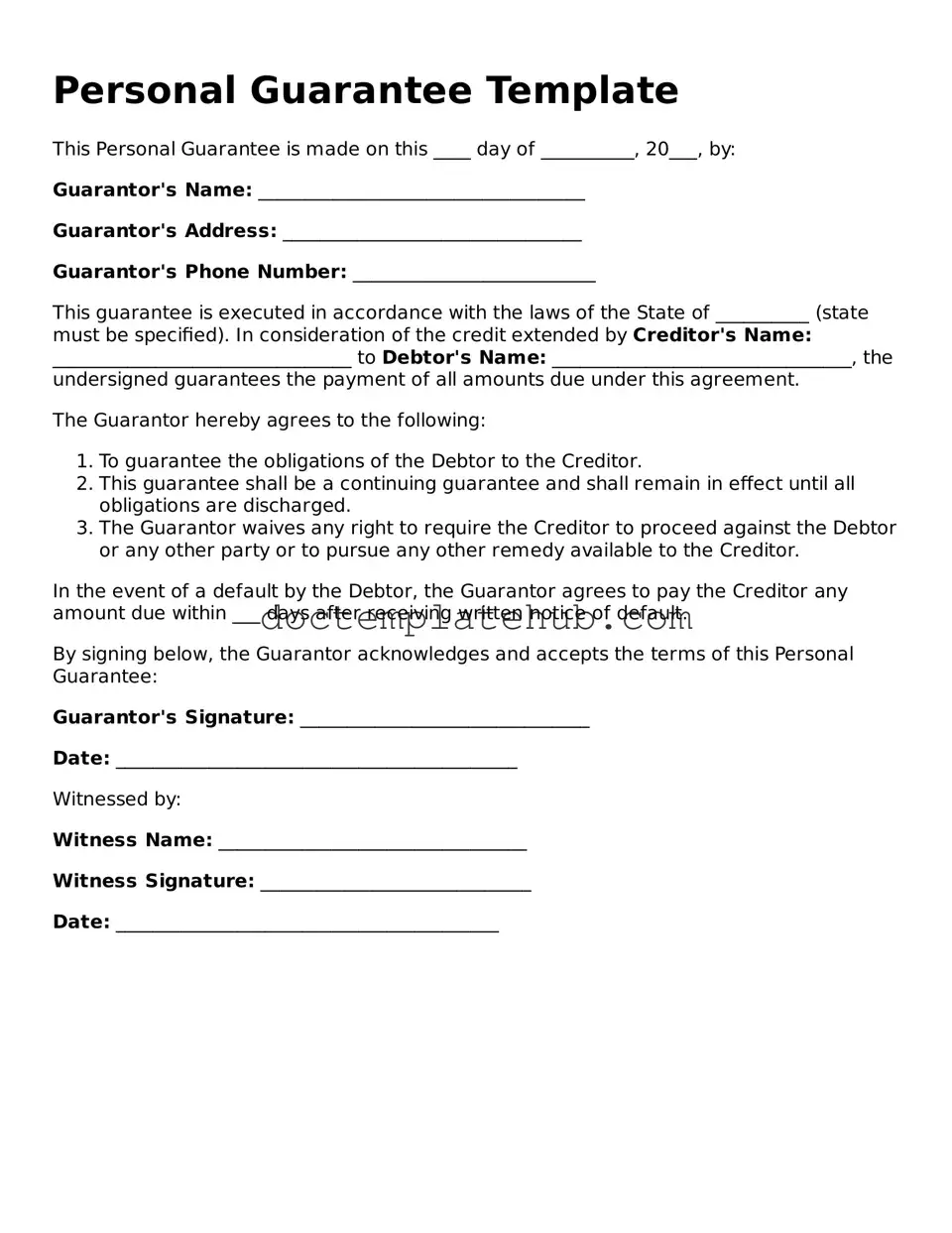A Personal Guarantee form is often compared to a Co-Signer Agreement. Both documents involve a third party agreeing to take on financial responsibility if the primary borrower defaults. In a Co-Signer Agreement, the co-signer's credit is also at stake, which can impact their financial standing. This mutual risk encourages the primary borrower to fulfill their obligations, knowing that someone else is equally invested in the repayment process.
Another document similar to a Personal Guarantee is a Lease Guaranty. This is commonly used in rental agreements, where a guarantor agrees to cover rent payments if the tenant fails to do so. Just like a Personal Guarantee, a Lease Guaranty provides landlords with an added layer of security, ensuring that they will receive their payments even if the tenant encounters financial difficulties.
A Loan Guarantee is also akin to a Personal Guarantee. In this scenario, a third party assures the lender that they will repay the loan if the borrower defaults. This document is often used in business financing, where lenders seek additional assurance before extending credit. Both forms are designed to mitigate risk for lenders and encourage responsible borrowing.
Next, we have a Surety Bond, which shares similarities with a Personal Guarantee. A surety bond involves a third party (the surety) who guarantees the performance of a contract or payment of a debt. In both cases, the third party assumes responsibility if the primary party fails to meet their obligations, providing reassurance to the other party involved.
A Corporate Guarantee can also be likened to a Personal Guarantee. In this case, a corporation agrees to back the debts of a subsidiary or another entity. This document serves to bolster the financial credibility of the borrowing entity, similar to how a Personal Guarantee supports an individual’s loan application by leveraging the guarantor's financial strength.
The Indemnity Agreement is another document that bears resemblance to a Personal Guarantee. In an Indemnity Agreement, one party agrees to compensate another for any losses incurred. While the primary purpose differs slightly, both documents involve one party stepping in to assume responsibility for another's obligations, providing a safety net in case of default.
For those looking to understand the formalities involved in real estate transactions, the key aspects of the Real Estate Purchase Agreement form are critical to grasp. This document plays a vital role in setting out the parameters agreed upon by both buyer and seller, ensuring clarity and mutual understanding throughout the sale process.
A Security Agreement can also be compared to a Personal Guarantee. In a Security Agreement, collateral is pledged to secure a loan. While the Personal Guarantee relies on the guarantor's promise to pay, a Security Agreement provides tangible assets that the lender can claim if the borrower defaults. Both serve to protect the lender's interests but through different mechanisms.
Another related document is a Credit Enhancement Agreement. This type of agreement involves a party improving the creditworthiness of a borrower by providing additional assurances. Like a Personal Guarantee, it aims to increase the likelihood of loan approval and favorable terms, benefiting both the lender and the borrower.
Lastly, the Affidavit of Support is similar in spirit to a Personal Guarantee. Typically used in immigration contexts, this document involves an individual promising to financially support another person. While the stakes and contexts differ, both documents reflect a commitment to assume financial responsibility, ensuring that obligations are met for the benefit of all parties involved.
